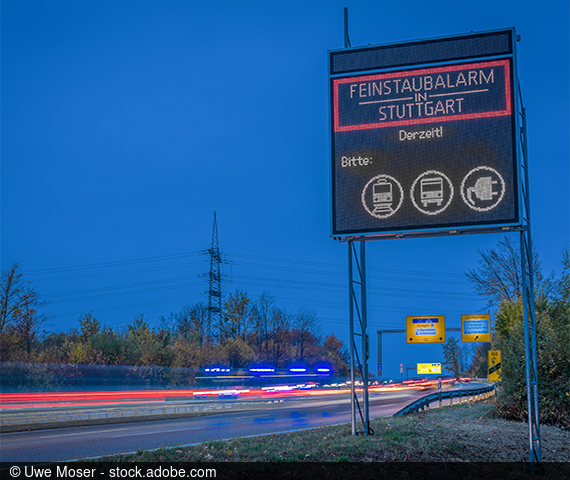Increasing Fine Particle Pollution Leads to Higher Crime Rates
ResearchAir Pollution in Baden-Württemberg and Rhineland-Palatinate
Increasing environmental pollution not only affects the health of the population, but also influences crime rates. If the particulate matter pollution rises by ten micrograms PM10 per cubic metre, the number of crimes increases by 4.6 per cent. This is the result of a recent study by ZEW Mannheim, which analyses this correlation for various regions in Baden-Württemberg and Rhineland-Palatinate for the years 2015 to 2017.
“While previous studies focused on metropolitan areas such as London or Chicago, the ZEW study looks at less populated – and thus less polluted – areas,” explains Professor Kathrine von Graevenitz, researcher in ZEW’s “Environmental and Climate Economics” Department. In the regions studied in Baden-Württemberg and Rhineland-Palatinate, the average particulate matter pollution is 15.69 micrograms PM10 per cubic metre, and the average crime rate is 8.76 per 100,000 inhabitants. “The impact of air pollution on crime rates is thus evident even when PM10 concentrations are well below the EU limits of 50 micrograms per cubic metre,” says Yasemin Karamik, study author and researcher in ZEW’s “Health Markets and Health Policy” Group. A further reduction in air pollution could therefore not only benefit the health of the population, but also contribute to fewer crimes being committed.
The ZEW study is based on several data sets combining information on the daily development of weather (especially wind), air pollution and crime. The data on wind comes from the German Meteorological Service (DWD) and the data on air pollution from the Umweltbundesamt (UBA, “Federal Environment Agency”). The study focuses on the effects of PM10, as this is the most frequently measured pollutant in Germany. PM10 is the term used by the UBA to describe a specific type of particulate matter, namely particles with an aerodynamic average of less than ten micrometres. The data on the crime rate is provided by the State Criminal Police Offices of Baden-Württemberg and Rhineland-Palatinate.
The main challenge in the analysis has been to distinguish the effects of air pollution from the effects of human activities that cause air pollution (e.g. traffic) and weather conditions that promote air pollution. By using the variation in air pollution caused by wind direction, the study authors are able to tell the effect of air pollution on crime from other factors. In recent years, research in medicine, biology and psychology has looked at the ways in which air pollution can influence criminal behaviour. Pollutants, such as PM10, can directly affect the human body, for example by causing a change in hormone levels (e.g. stress hormone). Such a change can in turn influence behaviour. As a result, rising air pollution could lead to an increase in crime rates.


